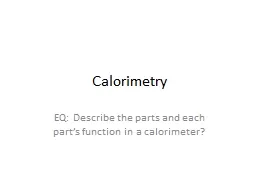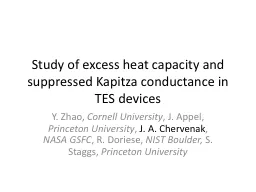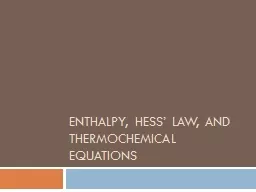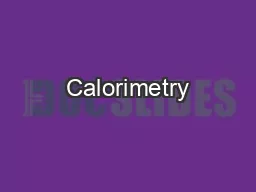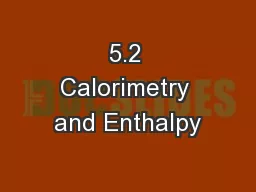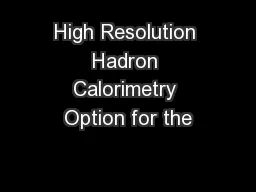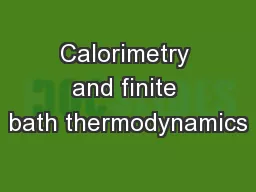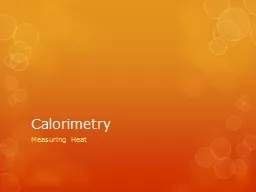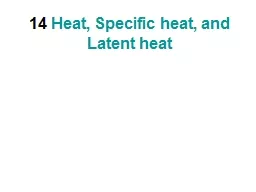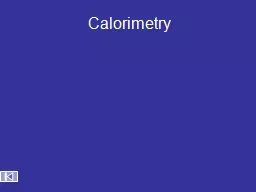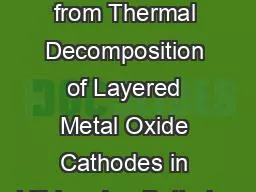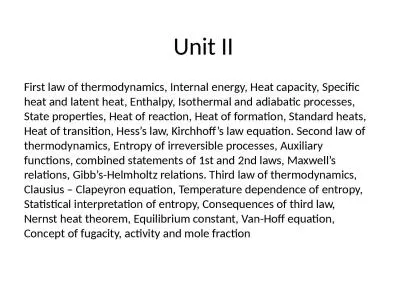PPT-Section 7.2—Calorimetry & Heat Capacity
Author : stefany-barnette | Published Date : 2016-06-07
Why do some things get hot more quickly than others Temperature Temperature proportional to the average kinetic energy of the molecules Energy due to motion Related
Presentation Embed Code
Download Presentation
Download Presentation The PPT/PDF document "Section 7.2—Calorimetry & Heat Cap..." is the property of its rightful owner. Permission is granted to download and print the materials on this website for personal, non-commercial use only, and to display it on your personal computer provided you do not modify the materials and that you retain all copyright notices contained in the materials. By downloading content from our website, you accept the terms of this agreement.
Section 7.2—Calorimetry & Heat Capacity: Transcript
Download Rules Of Document
"Section 7.2—Calorimetry & Heat Capacity"The content belongs to its owner. You may download and print it for personal use, without modification, and keep all copyright notices. By downloading, you agree to these terms.
Related Documents



